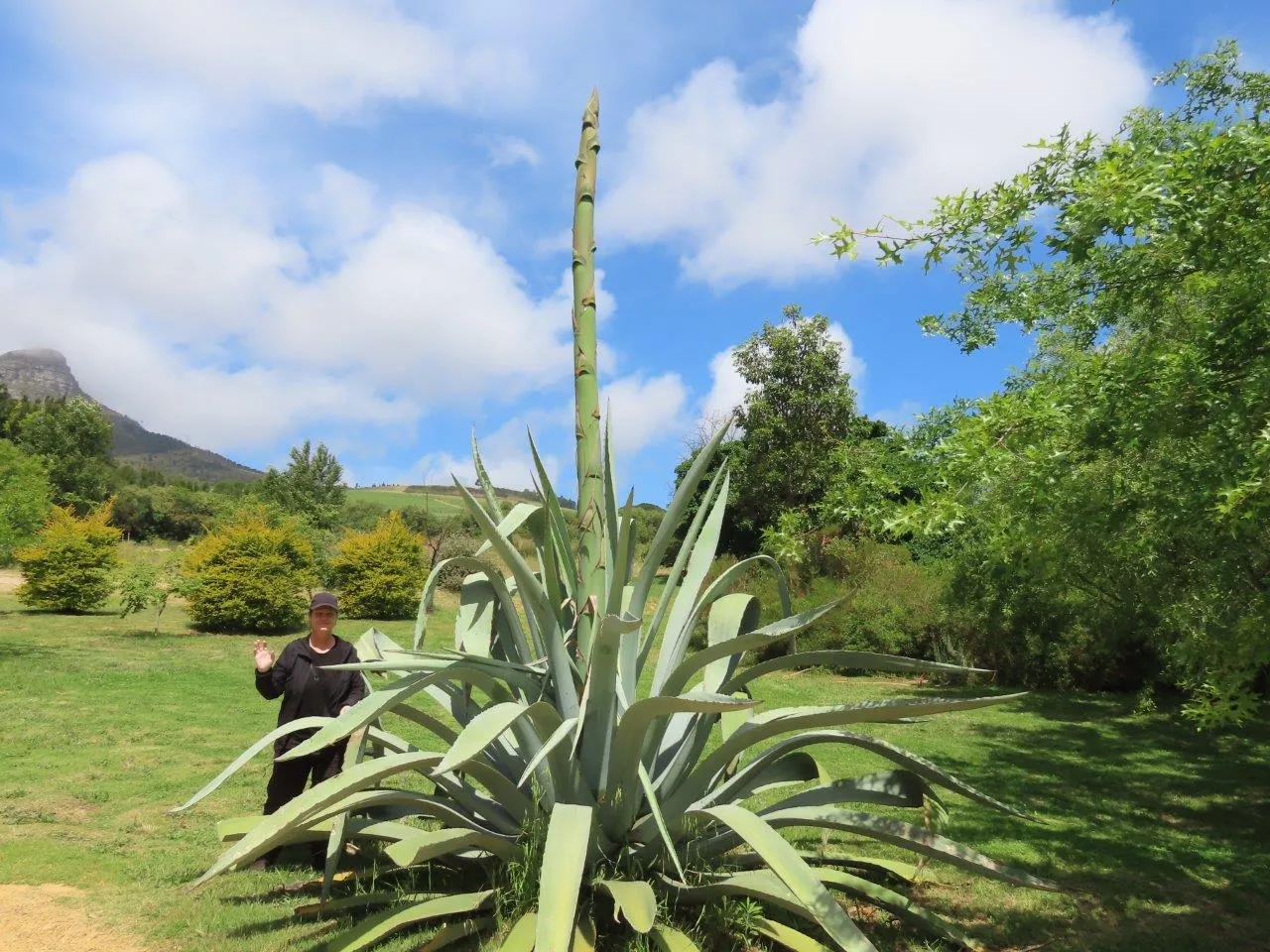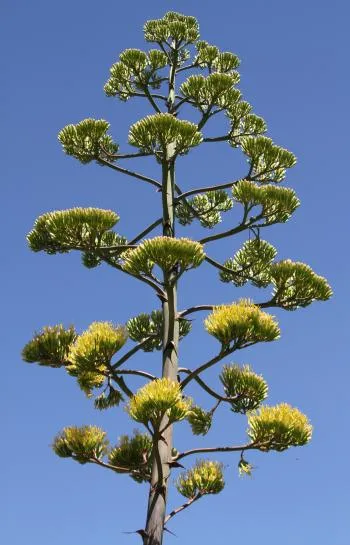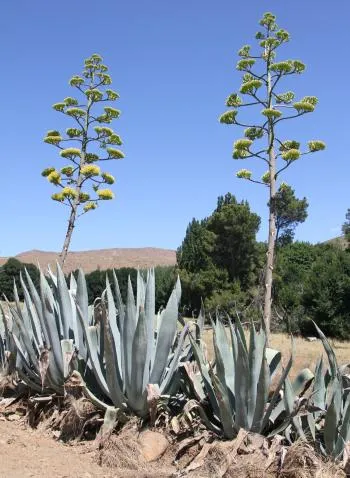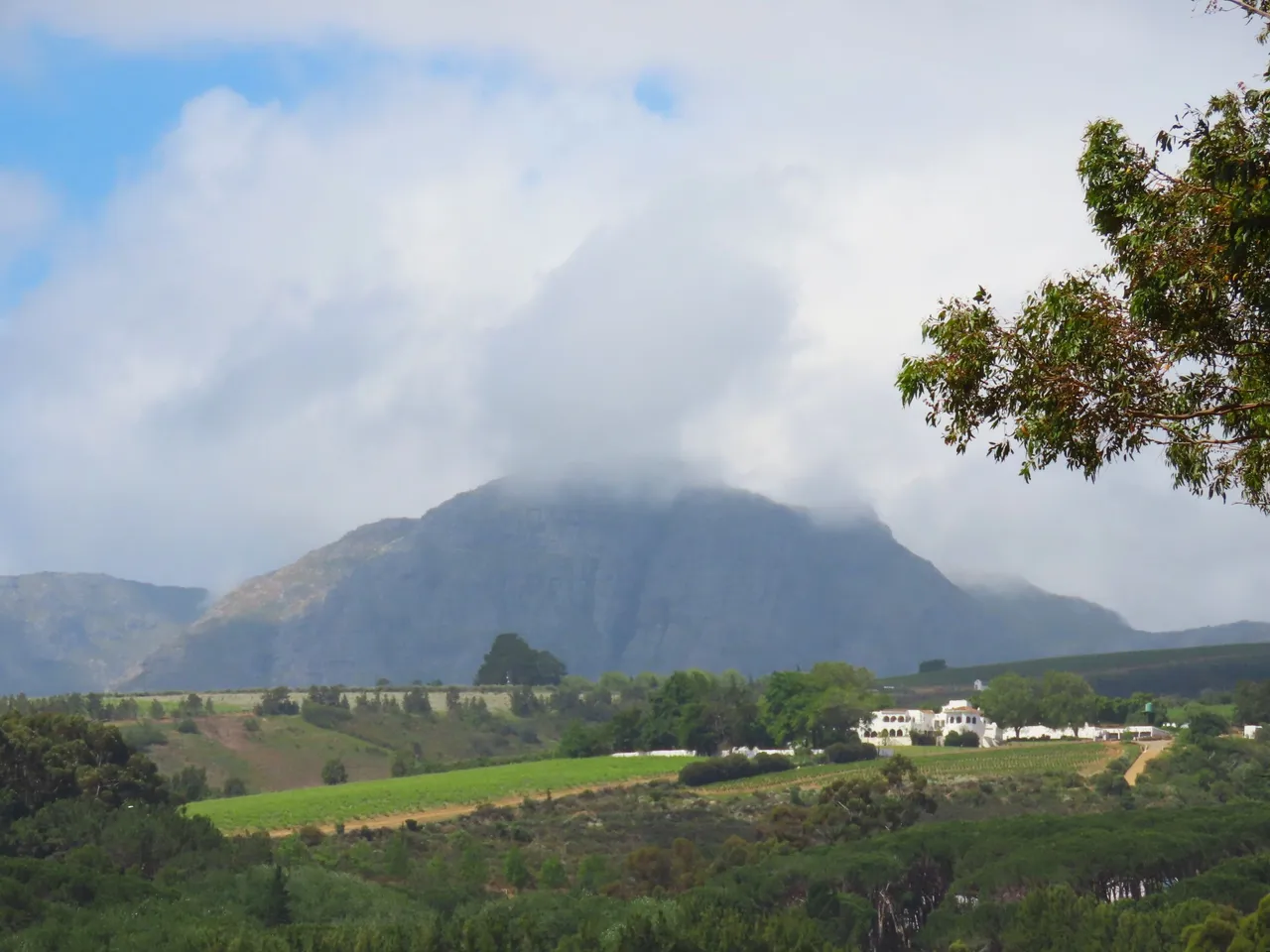Not just any normal plant, as they only flower after 25 years. We have seen it many times before, but now something else exciting was on show.

The first time for us to see that large stem powering up from the center of the plant.
I said in a previous post that, we made a great discovery here that I will show you in another post. That you can read HERE
This plant amazed us, as it was our first time to see that stem and I asked my wife to stand next to the plant in order for you to see the size of the plant with its new stem. As you can see, that stem grew like a 10 meter plant finger up into the sky to point at the clouds.
It was so lovely that I decided to do a bit of research about the plant and to my amazement I found that the plant stem will grow branches with flowers.
Look at what we are going to see. How fantastic is this?

The plant is called an Agave americana.
And to show you that it is the same plant, here is another view that I found in the source.

But that's not all and here is some information about the Century plant.
Agave americana is a suckering, evergreen monocarpic, multi-annual, with very large, succulent leaves arranged in a rosette, often reaching a height of 2 m. The long lanceolate (sword-shaped) leaves, 0.8–2.0 × 0.15–0.25 m, are borne on a short stem thickened by the prominent leaf bases. Leaves are grey-green, sometimes with a pale central stripe or yellow leaf margins, and a waxy coating. Leaf margins are nearly straight to crenate, creamy white and armed with variable teeth of up to 10 mm long and 10–40 mm apart. The apices of leaves bear sharp, dark brown, conical or subulate spines of mostly 20–60 mm long.
So, as you can see, the plant grows up to 2 meters tall and the stem grows up to 10 meters tall. In Africa everything grows big :)
Something else, never touch the thorns of that plant, as this is what they have to say about it.
Agave americana has many uses. It is used as an ornamental, for fodder, medicinally, agriculturally and for erosion control. Prickles along the leaf margins and the sharp apical spines can cause severe injury to humans and animals. Since it forms dense impenetrable stands, agaves are thus often planted as living protective hedges, for instance to restrict wild animals from accessing crops and domestic livestock.
This plant is almost globally grown as an ornamental. This evergreen species is popular for xeriscaping and is often used as accent plants in desert-themed and other water-wise gardens. Although it does not flower in a pot, it is suitable for potting, both indoors and outdoors. The fierce spines are often cut off when it is grown indoors to prevent injuries to humans or pets.
They list the plant as follows,
Attracts birds, drought resistant, feature plant, good potplant, indoor plant, poisonous hedge/screen, edible plant, medical plant, feeds honeybees.
Source
And remember that they tell us the plant will not flower when it is pot planted.
Poisonous and edible doesn't go down well with me, and I wonder if some of you will eat the plant?
So, one can never know what you can find when one pops in at the farms over here.

We have so much to still see and so little time, but life is good, and it is to be lived in harmony. This is what nature teaches me, as everything in life has a purpose and in gratitude we support the poor.
I hope you have enjoyed the pictures.
Photos by Zac Smith-All Rights Reserved. All sourced photos were cited.
Camera: Canon Powershot SX70HS Bridge camera.
Thank you kindly for supporting this post.